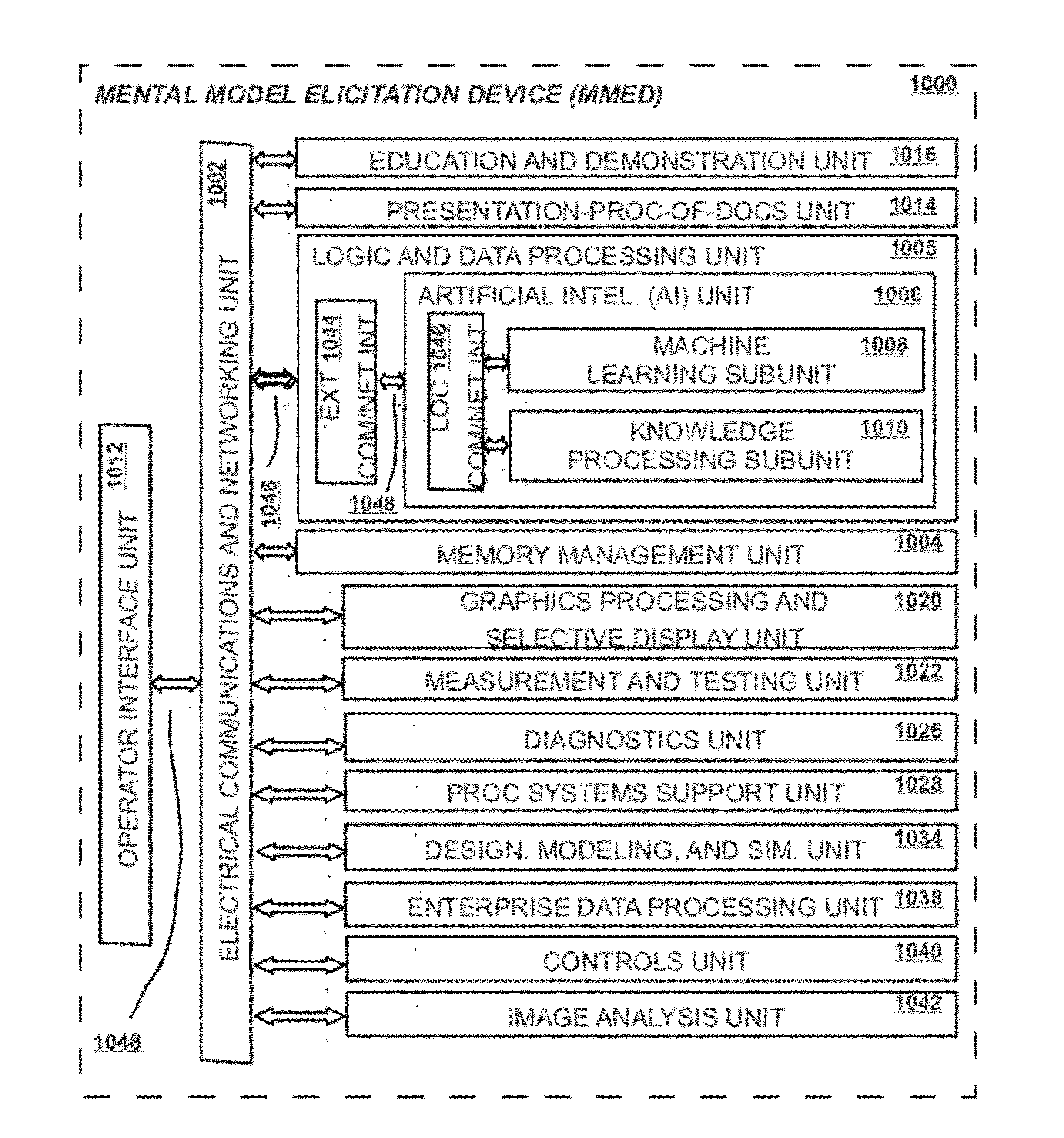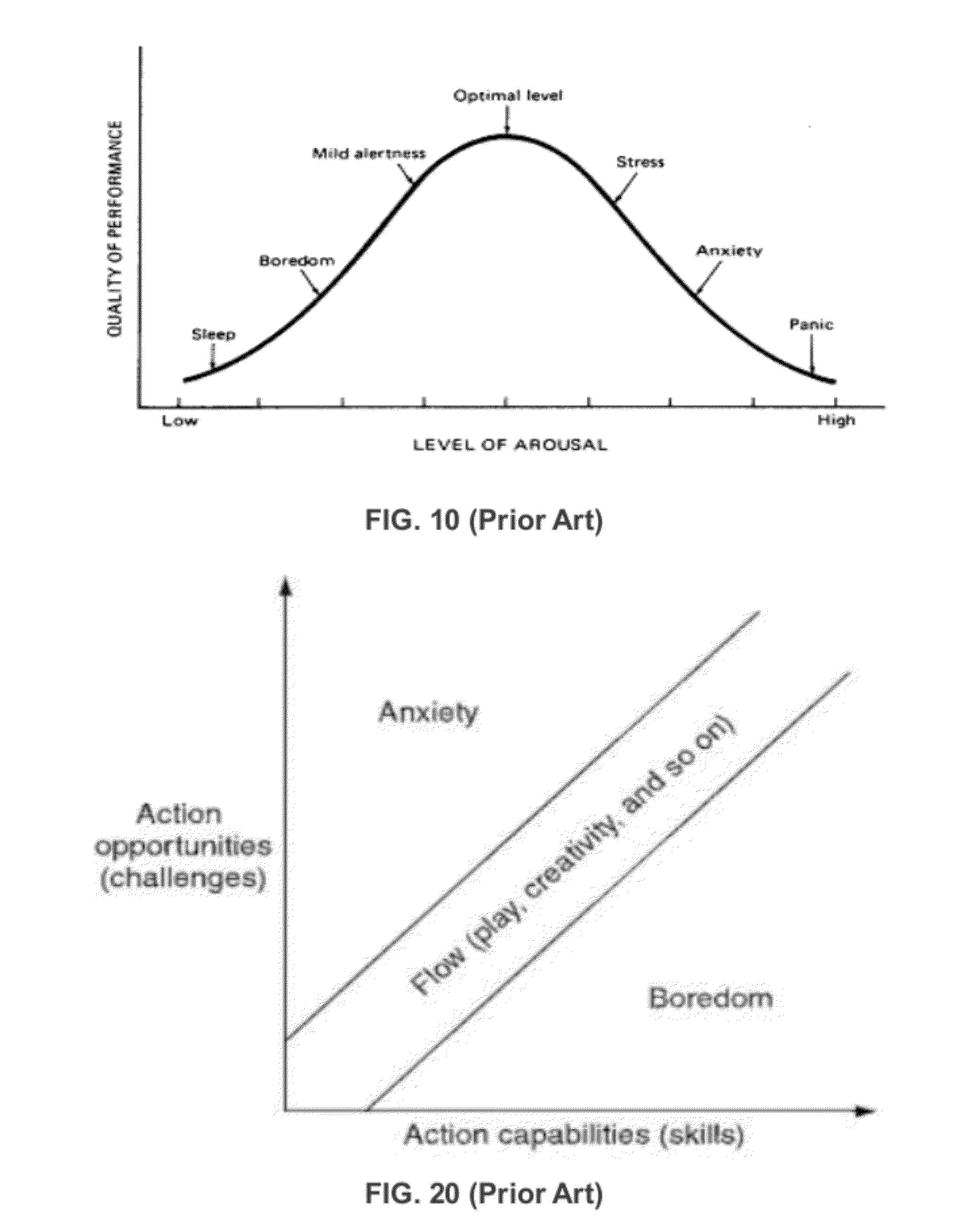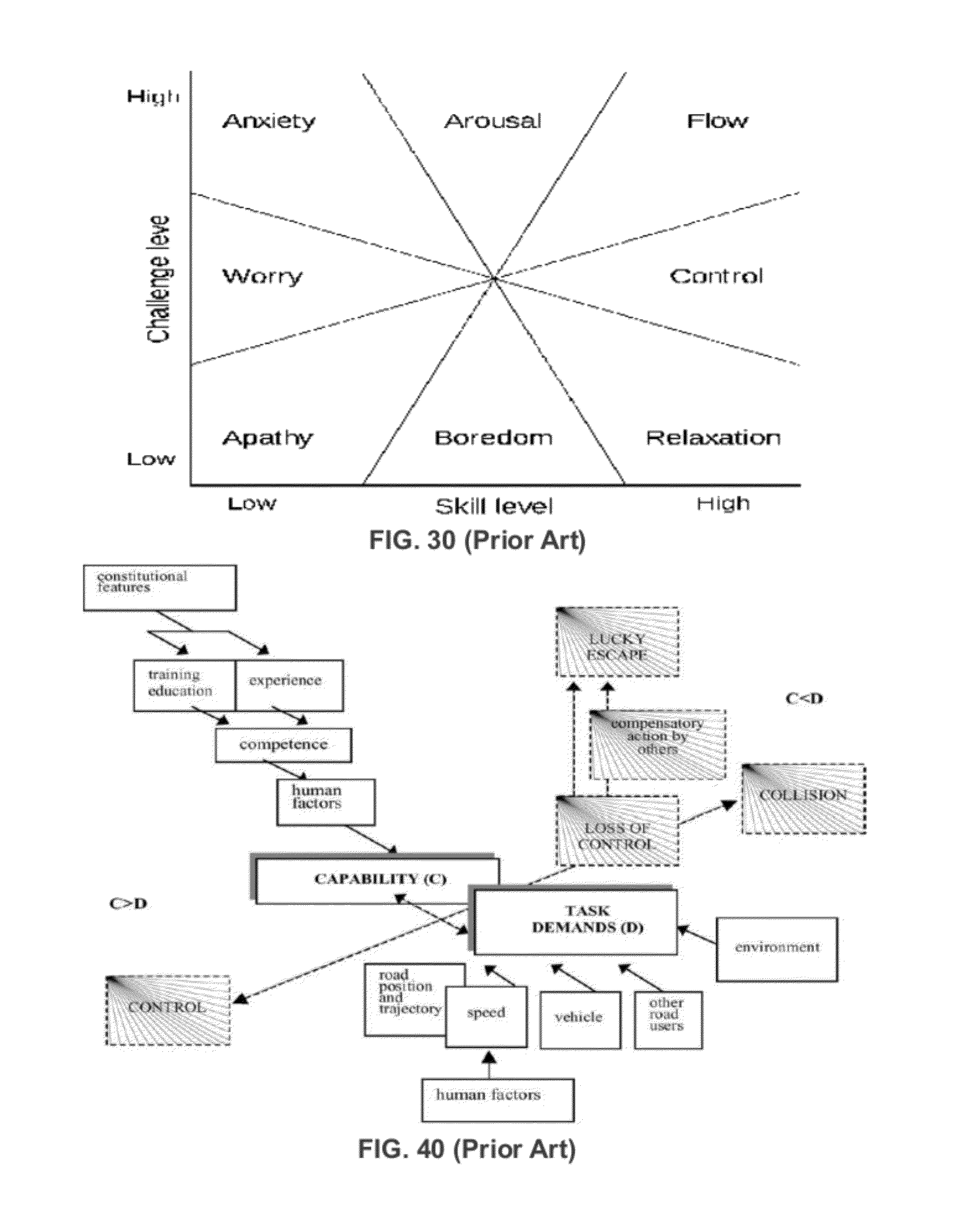Mental Model Elicitation Device (MMED) Methods and Apparatus
a technology of elicitation device and mental model, which is applied in the direction of knowledge representation, instruments, electric/magnetic computing, etc., can solve the problems of relative lack of awareness, ever-increasing information explosion, and called information overload, so as to improve executive function and working memory capacity.
- Summary
- Abstract
- Description
- Claims
- Application Information
AI Technical Summary
Benefits of technology
Problems solved by technology
Method used
Image
Examples
example embodiment
[0262]To the extent possible, the following paragraphs describe and teach in the terms and definitions of the United States patent classification system. For purposes of this description and teaching of the patent, the figures and diagrams illustrate logically defined views that demonstrate the logical segmentation into the respective aggregation, assemblage, or ensemble of the respective elements and subelements. Thus, the apparatus includes physically modularized devices, or possibly includes embodiments that transform the logically specified devices into a monolithic solution that physically intermingles, distributes, or rearranges the functionally defined elements and subelements as required for a specific physical embodiment. Given this potential mapping of a logically specified device, an embodiment of an element or subelement is nonetheless a physical device, or a physically distributed process within a mixture of other devices. As stated, and for purposes of this description...
example content
for Mmed Tag Clouds
Glossary of Related Keywords, Concepts, and Topics (Wikipedia)
[0330]The following semi-colon separated sampling of related keywords, topics, and concepts are further defined and described within their respective Wikipedia pages (http: / / en.wikipedia.org; last access 1 Jun. 2012): Aboutness; Abstract Data Structure; Abstract object; Abstract strategy game; Abstraction; Academic discipline; Accelerating change; Active listening; Activity Diagram; Actor model; Actor model theory; Adaptive Control; Adaptive System; Adaptive Technology; Affect; Affect (psychology); Affect display; Affectional bond; Affective computing; Affective neuroscience; Affective science; Agent; Agent Architecture; Ambiguity; Analogy; Animal cognition; Archetype; Argument map; Arousal; Artificial intelligence; Artificial Neural Network; Association (object-oriented programming); Association (psychology); Association of Ideas; Attachment theory; Attention; Attention management; Attribute-value syst...
PUM
 Login to View More
Login to View More Abstract
Description
Claims
Application Information
 Login to View More
Login to View More - R&D
- Intellectual Property
- Life Sciences
- Materials
- Tech Scout
- Unparalleled Data Quality
- Higher Quality Content
- 60% Fewer Hallucinations
Browse by: Latest US Patents, China's latest patents, Technical Efficacy Thesaurus, Application Domain, Technology Topic, Popular Technical Reports.
© 2025 PatSnap. All rights reserved.Legal|Privacy policy|Modern Slavery Act Transparency Statement|Sitemap|About US| Contact US: help@patsnap.com



